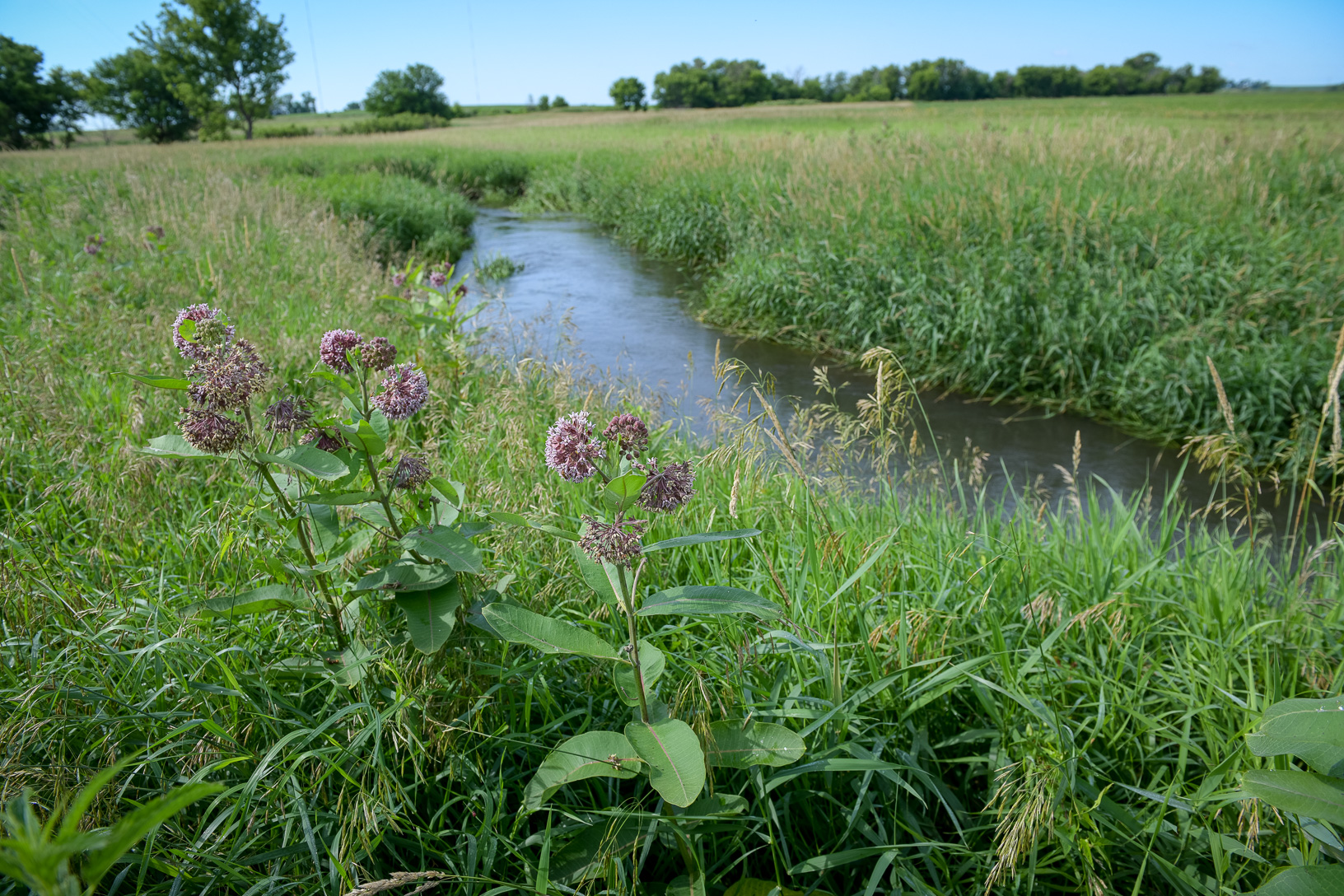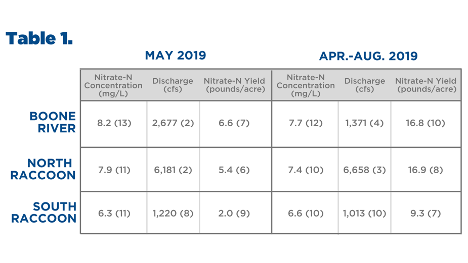
The unusually cool, wet spring of 2019 prevented many fields from getting planted in a timely manner seems to have limited nitrate-nitrogen loss, studies show. (Photo: Joseph L. Murphy/Iowa Soybean Association)
2019 water quality summary: Part 1
March 13, 2020 | Tony Seeman
This article is one of three to summarize water quality data collected by Iowa Soybean Association (ISA) and partners for 2019.
The Iowa Soybean Association (ISA) has a certified water lab that analyzes samples from rivers, streams, individual tile outlets, and edge of field practices from around the state of Iowa. ISA and other partners use this data to target areas for planning and implementing projects and to evaluate the effectiveness of installed practices on water quality. The data is also provided to individual farmers to assess their operations.
For this analysis, data collected with Agriculture’s Clean Water Alliance (ACWA) on large river systems provides a high-level look at longer term river conditions. ACWA is a consortium of ag retailers and support companies in the Des Moines and Raccoon River basins and has funded ongoing water monitoring. Subsequent articles will look at smaller watersheds with ongoing projects and edge of field practice performance.
The unusually cool, wet spring of 2019 prevented many fields from getting planted in a timely manner seems to have limited nitrate-nitrogen loss, studies show. ACWA data from the Boone River shows that April and May of 2019 had the lowest average concentrations since monitoring began in 2007. May is typically when nitrate concentrations begin to peak for the year in Iowa rivers. The story was very similar in the Raccoon River, which had the third lowest average concentration over the same timeframe. The table below shows the average results and ranking for nitrate-N concentrations, streamflow, and total nitrate loss.

Table 1. Values in table represent averages (nitrate concentration and discharge) or total (nitrate yield) for the time period. Values in parentheses are rank out of 13 years with 1 being highest.
These results illustrate the complex interaction of soil, water, and climate. Low concentrations typically happen during very low flows. Dilution during very high flows can also lead to lower concentrations, but the total amount of loss (yield) is generally high due to the sheer volume of water. But 2019 concentrations were low enough that even with above average flow, the loss was not extraordinary. A similar pattern was observed in the Middle Cedar River watershed in sampling conducted over the last 3 years with the City of Cedar Rapids.
Factors leading to reduced nitrogen-nitrate loss
There are several factors that may have led to these results. One is the previous wet fall. The 2018 harvest was delayed in many parts of the state as farmers waited for fields to dry from frequent rain. This fall rain may have flushed a lot of nutrients that remained after crop maturity. Another factor could have been the reduction in fall-applied fertilizer that accompanied the late harvest. Anecdotally, ACWA members discussed fall application being only 10 to20% of typical acreage. However, when analyzing tile sampling results from these watersheds for 2019, fall-applied fields actually had lower average concentrations and loads. While the differences in this small sample were not statistically significant, they suggest that fertilizer timing may not have that large of an impact on loss.
This points to soil processes having a large role in nutrient cycling. The cool, wet soil in the spring meant that microbial mineralization was slow to start, limiting the amount of water-soluble nitrate available to be leached before crop uptake. Additionally, the delay in spring field work, specifically tillage, would further suppress warming of the soil and increased microbial activity. The interactions among weather, soils, and management are complex. While this analysis shows that fertilizer timing was not a big factor in nitrate loss in 2019, it does suggest that nutrient cycling in this system was a driver and a conservation practice such as cover crops that directly impacts nutrient cycling should lead to reduced losses.
Read Part 2 Read Part 3
Back